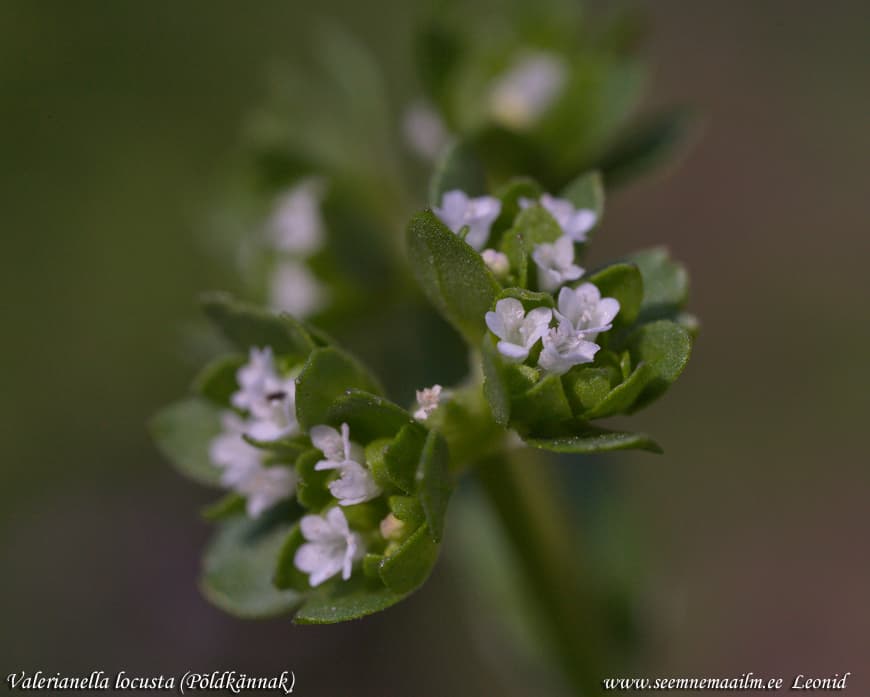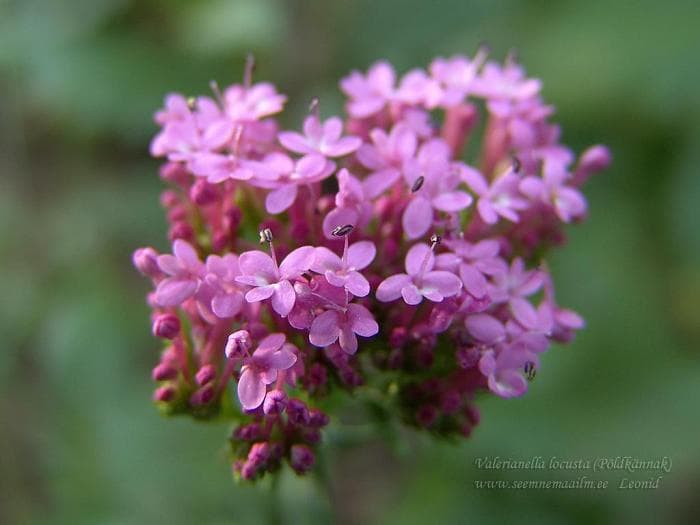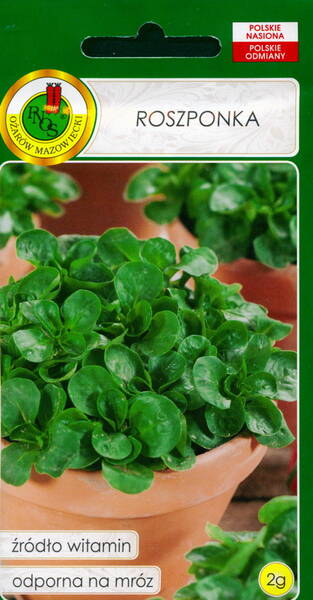Ex Tax: 1.25€
An annual herbaceous plant up to 20 cm high with a basal rosette of leaves. One of the main frost-resistant varieties of winter salads.
Forms oblong petiolate, whole rosette leaves, characterized by a sweetish specific taste.
It contains a significant amount of vitamins A and C, provitamin A, mineral salts, carotene, and has medicinal properties.
Leaves are used to prepare salads, sauces and side dishes for meat and fish dishes.
Agricultural technology.
Fertile slightly acidic or neutral soils are taken under valerianella.
It is sown early in spring (or in summer) directly into the soil in an ordinary way, 35-45 cm between rows, 10-15 cm between plants in a row.
For spring digging, 1-2 kg of humus or compost, 15-20 g of superphosphate, 20-30 g of ash are added per 1 m2. Shoots appear in 8-10 days.
Care of crops consists in loosening and watering.
They start cutting valerianella when the leaves reach a length of 7-10 cm and lead it at intervals of 2-2.5 weeks.
When flowering, valerianella becomes unusable.

The term for sowing seeds in open ground: in April, as soon as the soil warms up to a depth of 5-7 cm to + 10 ° C, and until mid-June. Shoots appear on the 8-10th day.
To get a salad in early spring, winter sowing is carried out in August. Before the onset of frost, the plants form several true leaves.
So that they do not freeze, since autumn they are covered with straw, spruce branches.
Sowing seeds for seedlings: 2nd decade of March -1 decade of April.
Sowing depth: no deeper than 1-2 cm.
Seeding scheme: row sowing, 35-45 cm between rows, 10-15 cm between plants in a row.
Temperature regime: the plant is very cold-resistant, tolerates frosts down to -10-15°C without damage. The optimum temperature for growth and development is +18+20°C.
Watering: the culture is moisture-loving, it develops poorly in hot, dry weather, the leaves quickly coarsen from lack of water.
Top dressing: as a rule, they are not carried out, only 5-10 g of urea or ammonium nitrate can be added per 1 m2.
When fresh manure and large doses of nitrogen fertilizers are applied, as well as when grown in the shade, it accumulates a lot of nitrates and becomes unsuitable for food.
Also, field lettuce can be grown in protected ground, using freed greenhouses at the end of summer.

Corn salad. Bot. syn.: Valerianella olitoria (L.) Pollich.












